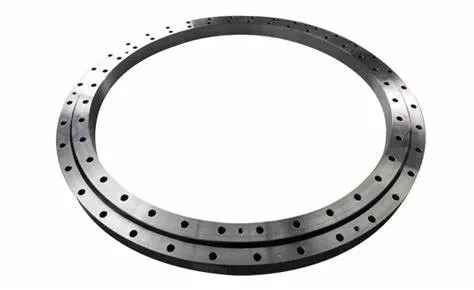-
Cangzhou Yulong Steel Co., Ltd.
-
Phone:
+86 13303177267 -
Email:
admin@ylsteelfittings.com
- English
- Arabic
- Italian
- Spanish
- Portuguese
- German
- kazakh
- Persian
- Greek
- French
- Russian
- Polish
- Thai
- Indonesian
- Vietnamese
- Zulu
- Korean
- Uzbek
- Hindi
- Serbian
- Malay
- Ukrainian
- Gujarati
- Haitian Creole
- hausa
- hawaiian
- Hebrew
- Miao
- Hungarian
- Icelandic
- igbo
- irish
- Japanese
- Javanese
- Kannada
- Khmer
- Rwandese
- Afrikaans
- Albanian
- Amharic
- Armenian
- Azerbaijani
- Basque
- Belarusian
- Bengali
- Bosnian
- Bulgarian
- Catalan
- Cebuano
- China
- China (Taiwan)
- Corsican
- Croatian
- Czech
- Danish
- Esperanto
- Estonian
- Finnish
- Frisian
- Galician
- Georgian
- Kurdish
- Kyrgyz
- Lao
- Latin
- Latvian
- Lithuanian
- Luxembourgish
- Macedonian
- Malgashi
- Malayalam
- Maltese
- Maori
- Marathi
- Mongolian
- Myanmar
- Nepali
- Norwegian
- Norwegian
- Occitan
- Pashto
- Dutch
- Punjabi
- Romanian
- Samoan
- Scottish Gaelic
- Sesotho
- Shona
- Sindhi
- Sinhala
- Slovak
- Slovenian
- Somali
- Sundanese
- Swahili
- Swedish
- Tagalog
- Tajik
- Tamil
- Tatar
- Telugu
- Turkish
- Turkmen
- Urdu
- Uighur
- Welsh
- Bantu
- Yiddish
- Yoruba

Oct . 04, 2024 05:00 Back to list
blank flange pipe
Understanding Blank Flange Pipes
In industrial piping systems, various components are used to ensure efficient flow control and maintain the integrity of installations. One such component is the blank flange, a critical element in managing the connections and integrity of pipelines. This article explores the concept of blank flange pipes, their uses, and advantages in numerous applications.
A blank flange, as the name suggests, is a solid, flat piece of metal with no openings. It is primarily used to seal the end of a pipe or fitting, preventing any substance from escaping or entering the system. The blank flange is designed to fit standard pipe dimensions and can be attached using bolts, allowing for secure and tight sealing of the pipeline.
Blank flanges are made from various materials, including stainless steel, carbon steel, and high-alloy materials. The choice of material depends on the specific requirements of the pipeline, including temperature, pressure, and the nature of the materials being transported. For instance, stainless steel blank flanges are often chosen for their corrosion resistance and durability, making them ideal for chemical processing applications.
One of the primary uses of blank flange pipes in industrial settings is to facilitate maintenance and inspection of piping systems. By using a blank flange, operators can easily close off sections of the pipeline during maintenance operations. This allows for safe and controlled servicing of equipment without the need to shut down an entire system, minimizing downtime and enhancing productivity.
blank flange pipe

In addition to maintenance, blank flanges are also crucial during the construction phase of piping systems. They provide a temporary closure that allows workers to complete other aspects of the system without the risk of leaks or contamination. Once construction is completed, the blank flange can be replaced with a fitting or connected to another pipeline, ensuring a secure and functional connection.
Moreover, blank flanges contribute to safety in industrial environments. The use of these flanges to seal off sections of piping prevents accidental spills or releases of hazardous materials, thereby protecting both workers and the surrounding environment. In industries where pressure is a significant factor, blank flanges help maintain necessary pressure levels, preventing potential failures or ruptures in the system.
The installation of blank flanges is typically straightforward, requiring proper alignment and tightening of bolts to achieve a leak-free seal. However, it is essential to follow industry standards and guidelines to ensure that the installation meets safety and performance requirements.
In conclusion, blank flange pipes are indispensable components in the world of industrial plumbing and piping systems. Their ability to provide secure closures for pipes enhances safety, supports maintenance operations, and enables efficient construction processes. Choosing the right material and following proper installation practices are crucial to maximizing the benefits of blank flanges in any piping application. As industries continue to evolve, the significance of such components will only grow, underscoring the need for reliable and robust solutions in pipeline management.
Latest news
-
ANSI 150P SS304 SO FLANGE
NewsFeb.14,2025
-
ASTM A333GR6 STEEL PIPE
NewsJan.20,2025
-
ANSI B16.5 WELDING NECK FLANGE
NewsJan.15,2026
-
ANSI B16.5 SLIP-ON FLANGE
NewsApr.19,2024
-
SABS 1123 FLANGE
NewsJan.15,2025
-
DIN86044 PLATE FLANGE
NewsApr.19,2024
-
DIN2527 BLIND FLANGE
NewsApr.12,2024
-
JIS B2311 Butt-Welding Fittings LR/SR 45°/90° /180°Seamless/Weld
NewsApr.23,2024











